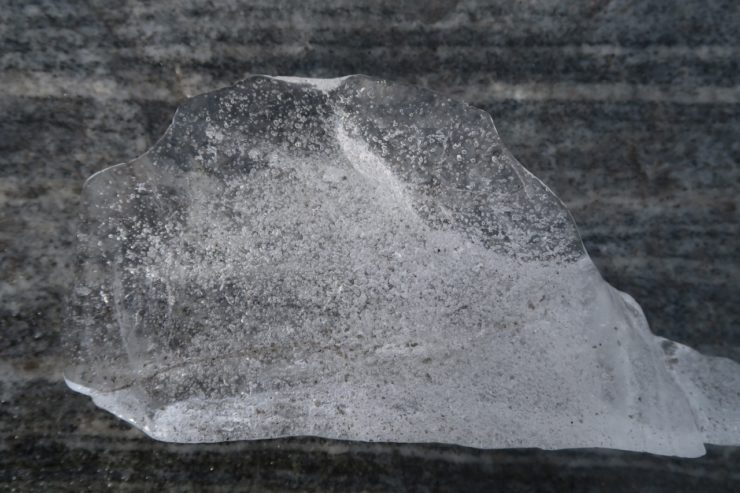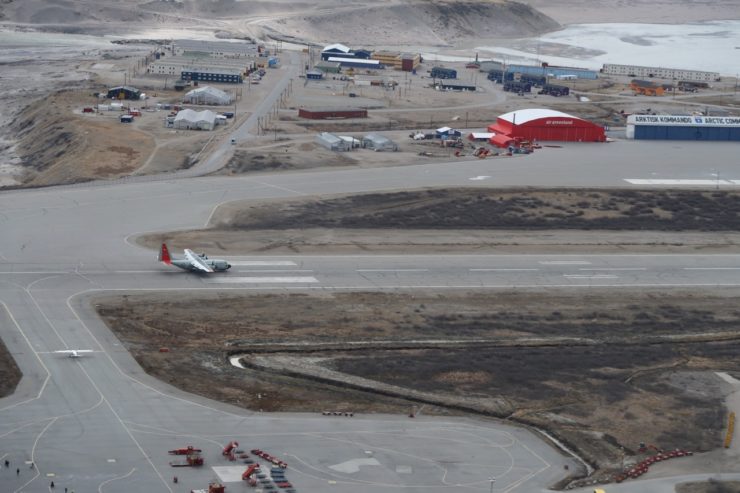Blog
Day 4: Flight preparations and preparations of firn air sampling
If everything is going to plan, our plane should take off tomorrow at 9 am to bring us to the EGRIP camp. Weather is perfect, -20C right now and clear sky, but of course it can change. Let’s hope that this time it will go through. If not we may come into serious problems, since the Hercules aircraft that will bring us there has a fixed date to leave to the US on tuesday. So it has to work out in the next 2 days, and of course our colleagues that are in the camp now also really want to go home….
As we lost three days now already, we had an intensive preparation meeting with our “firn air pumping” team today so that we can start effectively when we get there. And maybe it is a good moment now to describe
what I will be doing at EGRIP
I mentioned in my blog yesterday how ice on the ice sheet forms from snow that is pressed under the weight from above to ice (see also the diagram from yesterday’s blog). Once the ice is formed the remaining air is enclosed in small air bubbles. You can see the bubbles on the photograph that I took of a piece of ice during our trip to the Russel glacier on wednesday, and I hope that I can send some more and better pictures when I am in the camp next week and we have a real ice core.
Before the ice is formed, that means in the top ~70 m of the ice sheet at EGRIP, the air bubbles are still connected to each other via a network of small pores and channels. So you can actually pump air out of this so-called “firn” and this is what we are planning to do in the firn air pumping project. The procedure is as follows: First a whole is drilled to a certain depth, then an inflatable “bladder”is inserted into the hole. The bladder is a long hollow rubber “sausage” that is lowered to just above the bottom of the hole, then pumped up so that it inflates and seals against the walls of the hole (I will send photographs in the next days). So the volume near the bottom of the hole is isolated and no atmospheric air from above can come in. When this has been achieved, air from below the bladder is pumped to the surface via long tubes that actually go through bladder. This way we pump away the air under the bladder and create a vacuum there so that air from the surrounding firn will flow into the space under the bladder. The pumping goes on for a long time and when the original atmospheric air has been completely replaced by firn air, we fill the firn air into canisters that are later analyzed.
There are 7 different laboratories from all over the world that have sent us sample canisters that need to be filled and that will be analyzed later for different gases and signatures at the different laboratories. It is surprising how much air you can extract from the firn. The largest canisters are actually our own high-pressure cylinders from Utrecht, where we want to collect about 500 L of air per depth, because we want to analyze later a very special isotope signal in the greenhouse gas methane. And these cylinders will always be filled at the end, i.e. when all the other canisters have been filled already at the same depth.
Once we have sampled air from a certain depth, the hole is drilled a few meters deeper and the procedure continues again until all canisters are filled, and so on. If everything goes according to plan, we want to sample from 21 different depths in the top 70 m of firn. Why this? The deeper we go the older is the air that we can collect. Interestingly the air is not as old as the ice in the surrounding firn, because air always exchanges through the open pores. In the first meters the exchange is strong, because the pore space is large, but the more compressed the firn gets, the smaller the pore space and the less exchange of air. Firn air at the firn-ice interface is usually about 50 – 70 years old, and so we get air from the late industrial period, during which the concentrations of many greenhouse gases and air pollutants have strongly increased.
So I really hope that this nice project can actually start tomorrow and that I will be able to send you a picture of the ice sheet instead of the city of Kangerlussuaq. You see the city in the top part behind the airport, we stay in one of the long barracks on the left. In the foreground you see the airport with a Hercules aircraft on the runway about to start. Yes, it did fly today, but to the American Summit station and not to EGRIP ☹️. Tomorrow is our turn. 

